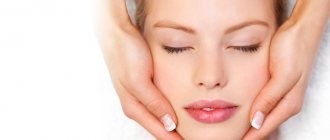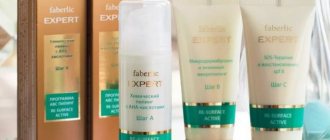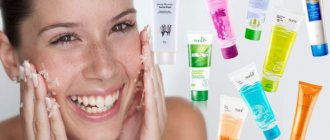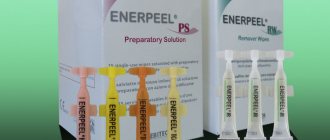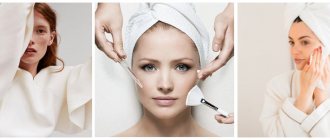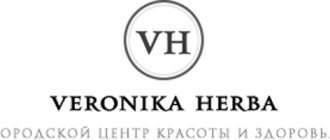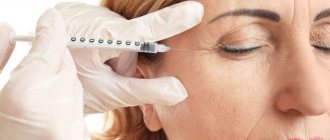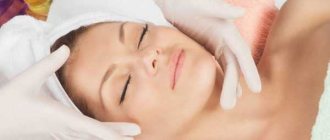From this article you will learn:
- Why is lactic acid used for peeling?
- Types of milk peelings
- Who is suitable for milk peeling?
- Contraindications to the procedure
- How does lactic acid affect the skin?
- Pros of the procedure
- Disadvantages of milk peeling
- How does the procedure work?
- Is it possible to do milk peeling yourself?
- Homemade peeling recipes with lactic acid
- Professional compositions for milk peeling
- Where is the best place to do milk peeling?
Milk peeling is one of the gentle methods of exfoliation. This service is popular because it is quite universal. Peeling can be done at any time of the year and is suitable for all skin types.
The procedure does not involve serious restrictions, including age restrictions. Exfoliation with lactic acid allows you to refresh your complexion, even out your tone, get rid of acne, dryness and flaking. We can talk about the advantages of such peeling for a long time, but it has disadvantages and contraindications. We invite you to learn more about the intricacies and nuances of the procedure.
Why is lactic acid used for peeling?
Lactic, or lactic, acid belongs to groups of acids of natural origin. It is formed as a result of the breakdown of glucose molecules. The substance has a natural composition and is safe for humans, helps moisturize the skin, and participates in carbohydrate metabolism.
To produce acid on an industrial scale, conditions are created under which lactic acid fermentation of glucose occurs as a result of an enzymatic reaction. In its natural form, a similar substance is present in spoiled dairy products, mature cheese, pickled or pickled vegetables, and it is also formed during the fermentation of wine and beer. The small size of the molecule allows the acid to easily pass through the cell membrane. This helps it to evenly cover the desired area of skin during peeling, equally affecting the entire area.
Recommended articles on the topic:
- Ultrasonic facial peeling is a pleasant and beneficial procedure for your skin
- Redermalization of the skin: all the pros and cons
- Almond peeling for the face: features of the procedure
When interacting with the stratum corneum, lactic acid (lactate) makes it thinner, resulting in smooth and soft skin. Penetrating into the mouths of the sebaceous glands, the acid dissolves the particles of dirt, cosmetics, epithelium and sebum contained in them. That is, it cleanses the glands, helps eliminate blackheads and inflammation on the face. The anti-inflammatory effect of the substance is also due to the fact that the composition contains lactate ions, which slow down the development of pathogenic organisms.
As a result of exposure to lactic acid, a minor chemical burn is formed, in response to which renewal processes are activated. As a result, the regeneration cycle is reduced to 4 weeks, which corresponds to the physiological norm.
Another significant advantage of the substance is its ability to moisturize. As a component of NMF (skin's natural moisturizing factor), it helps bind and properly redistribute moisture.
Lactonic acid helps strengthen the epidermal barrier and produce ceramides. It also enhances the work of fibroblasts, which, in turn, increase the synthesis of hyaluronate. All this ultimately activates water-saving mechanisms.
Acid also has whitening properties, which is partly due to its ability to exfoliate. The effectiveness of drugs with high concentrations of the substance is due to the fact that they block the work of the enzyme involved in the formation of melanin - tyrosinase.
Milk facial peeling in cosmetology is a delicate and gentle procedure. It is suitable for sensitive, dry, oily and other skin types. Therefore, lactic acid in peeling can be used by almost everyone.
Answers on questions
Which peeling is better: milk or glycolic?
Glycolic exfoliants penetrate deeper into the dermis and have a more intense effect. Their main purpose is rejuvenation and hydration. If you have aging, dry skin with the first signs of aging, choose glycolic exfoliation.
Lactic acid is more suitable for young dermis with minor problems and increased fat content. The enzyme has fewer contraindications and is all-season.
Deciding which peeling is best for you should only be done after consulting with a professional. The cosmetologist will select the best option, prescribe the acid concentration and frequency of use.
After milk peeling I got a burn. How to carry out treatment?
Skin burns after milk exfoliation are rare. In this case, only the stratum corneum is damaged, which corresponds to thermal injury of the first degree. Such burns usually go away within 3–4 days.
Creams will help speed up the healing process: Bepanten, Panthenol, Olazol. Healing agents should be applied twice a day.
To eliminate local itching, use Elokom. The drug is available in the form of cream, lotion and ointment. Choose an option that is convenient for you and lubricate your face once a day. Can be used in combination - first tonic, then cream or ointment.
Additional care for the burned epidermis will be provided by special post-peeling products, for example, Christina Rose or Medical Collagene.
Is the procedure capable of causing frost if the instructions are followed?
What is frost? Essentially, it is a protective film consisting of coagulated protein and prevents the penetration of enzymes into the deeper layers of the dermis. As a rule, skin whitening is accompanied by a burning sensation and a feeling of discomfort.
When applying milk peeling, frost does not form, since the procedure is a very superficial effect at the level of the stratum corneum.
Types of milk peelings
Lactonic acid can be contained in preparations for both salon and home cosmetic procedures. The effectiveness of the products depends on the concentration of the acid. It can be low (20–30%), medium (lactic acid content in milk peeling is 30–50%), high (50–90%). In preparations for milk peeling, 10% lactate may be present in cases where the procedures are staged. For example, they can be used to identify problems with blood vessels or prepare the skin for a course of peeling.
Preparations for procedures are used in cosmetology course programs to correct aesthetic defects. Thus, Lactic peel 30% from Mesoestetic helps eliminate minor wrinkles, rosacea, stretch marks, and sagging. It is also used in the presence of signs of stage I–II photoaging. New Peel's Lactic Gel-Peel is used to enhance hydration. This milky chemical peeling will be the best option for very sensitive, dry skin prone to rosacea.
What are the contraindications?
Milk peeling is contraindicated in the presence of a number of local changes:
- inflammatory reactions;
- open wounds;
- increased skin sensitivity and thinning.
General contraindications include:
- any disease in the acute stage;
- rosacea;
- oncological processes;
- pregnancy;
- severe hypertension.
You should also remember about the existence of skin phototypes. Different peelings correspond to different skin phototypes. Thus, incorrectly selected peeling for dark skin can lead to a complication - post-peeling hyperpigmentation. For dark skin with Fitzpatrick phototype IV-V, deep peels are contraindicated.
Who is suitable for milk peeling?
This procedure is indicated when there are the following facial skin problems:
- lack of elasticity, loss of tone;
- moisture deficiency, dryness, resulting in peeling;
- allergy, hypersensitivity to any external influences;
- the sebaceous glands do not work well enough, which causes oily sheen and rashes;
- enlarged pores;
- unhealthy color;
- pigment spots are present in large quantities;
- the presence of small wrinkles;
- signs of aging due to exposure to sunlight;
- the appearance of local, not very deep stretch marks;
- minor acne (pimples, blackheads, post-acne);
- preparation for radical cosmetic procedures (lactic acid is used in a complex of manipulations for skin rejuvenation).
Photos before and after milk peeling clearly demonstrate the results of the procedure.
What effect should I expect?
Superficial peelings have a cumulative effect and are carried out in courses. The condition of the skin improves after the first procedure - the complexion improves, a gentle glow appears, pigment spots fade and blackheads disappear.
After completing the course, the effect is even more noticeable - the face looks younger and fresher, sebum production is normalized, surface defects, pigmentation and wrinkles disappear. The result lasts for 6–9 months, and then the course is repeated.
Contraindications to the procedure
The following may be an obstacle to the manipulation:
- the presence of a fresh tan - both natural and obtained in a solarium;
- acute stage of herpes;
- bearing a child, breastfeeding period;
- individual allergic reaction to the components included in the product;
- injured skin (cuts, scratches, etc.);
- recent hair removal;
- taking medications that increase the effect of sunlight on the skin - certain types of antibiotics and retinoids;
- oncological diseases;
- the presence of dilated capillaries and spider veins (in this case, peeling with a high pH and low acid content is used);
- ARVI, cold;
- diabetes.
We recommend
Laser aesthetic cosmetology: perfect technology for an ideal appearance Read more
Execution steps
The procedure itself takes place in several sequential steps.
First, the specialist thoroughly cleanses the skin of dirt, dust, cosmetic residues and sebum. Special lotions are used for this purpose.
Next, the skin is degreased and toned. To maximize the effect, it is recommended to use tonics that contain fruit acid.
Next, the peeling itself is performed. The product is applied to the surface of the epidermis in an even layer using a brush. You need to soak the substance for about 3-20 minutes. The time will depend on the individual characteristics of the skin.
At the end of the required period, the remaining product is washed off with cool water, and the face is dried with paper napkins or a towel.
After this, the cosmetologist must carry out the neutralization process.
At the last stage, a mask and nourishing cream are applied.
How does lactic acid affect the skin?
It is important to know what milk facial peeling is and what is the basis of such a procedure. The main active ingredient here is lactic acid, which affects the skin in the following way.
First of all, it has a keratolytic effect when it destroys the connections between the corneocytes of the stratum corneum. As a result, the dead epidermal cells are exfoliated, the cells of the basal layer begin to actively multiply, which leads to the regeneration of the skin.
Lactic acid is also an effective moisturizer. Being in the stratum corneum, it attracts water like a magnet. This has a beneficial effect on turgor - the skin becomes elastic. In addition, when the skin is renewed, the metabolic activity of new living cells increases, because they arise in the basal layer, which is located above the dermal layer. As a result, the required amount of moisture enters the skin.
As a result of milk chemical peeling, cell division occurs, which enhances the activity of fibroblasts - the main structures of connective tissue. This has a positive effect on skin tone. In addition, the procedure causes the synthesis of the components of the intercellular substance - collagen and elastin. Glycosaminoglycan molecules, which are needed by the human body as a natural lubricant, begin to be produced more efficiently. In general, lactic acid optimizes turgor, smoothes the skin surface, and removes minor wrinkles. All this becomes possible due to moisturizing the skin and enhancing the special properties of the dermal layer.
By reducing the intercellular connections of corneocytes, peeling promotes sebostatic and comedonolytic effects, which inhibit excessive sebum formation. Lactic acid also reduces the production of lipase, reducing the risk of inflammation. As a result, the oily sheen on the face disappears, the pores become normal, blackheads, pimples and comedones almost completely disappear, and the skin is filled with the necessary amount of moisture.
Carrying out home and professional milk peeling also helps whiten the skin. Dead cells are removed, melanin is properly distributed in the structure of the epithelium, and tyrosinase, which is involved in the initial stages of melanogenesis, begins to be actively synthesized. Therefore, the skin after the procedure takes on a fresh and healthy appearance.
Both salon premium milk peeling and the procedure performed at home also help eliminate inflammation and destroy bacteria that cannot multiply in the lactic acid environment.
Finally, lactate also has an antioxidant effect. The active substance controls the synthesis of free radicals and protects the skin from harmful environmental influences.
Operating principle
The procedure has a gentle and non-traumatic effect on the skin. It is recommended for hypersensitivity, a tendency to dryness or, conversely, to oiliness. Cosmetologists note that professional peeling with lactanic acid is beneficial for any skin type, therefore it is universal.
As a result of the procedure, the following is observed:
- active renewal of epidermal cells;
- improvement of local microcirculation;
- acceleration of the synthesis of collagen fibers and lycosaminoglycans;
- strengthening the natural lipid barrier of the skin;
- deep hydration.
Even with high sensitivity of the skin, a slight exfoliating effect appears without severe redness and other undesirable consequences after the session. Milk and almond-milk peeling, in addition to ideally cleansing pores, provides intense hydration and restoration of the correct water balance. A beautiful natural color returns to the face, and there is no need to worry about noticeable lightening of dark and tanned skin.
Lactic acid combines well with various auxiliary components. In particular, milk-glycol peeling is used to affect the middle layers of the dermis, and milk-salicylic peeling is used to relieve inflammation and fight rashes.
Pros of the procedure
The manipulation itself and subsequent skin care significantly distinguish milk peeling from almond peeling, for example, or other similar cosmetic procedures. The main advantage is that the use of lactic acid is almost painless. The peeling process does not cause discomfort. Also, the substance does not cause allergic reactions.
After the procedure, the client can go outside as soon as possible, without fear of appearing in front of others. The skin does not peel off as actively as happens after other types of peeling; dead cells come off layer by layer, unnoticeably.
Due to the fact that peeling is a fairly delicate, gentle manipulation, no preliminary preparation at home is required. It is often carried out at one of the stages of serious cosmetic procedures.
If you choose: milk peeling or almond peeling, the acid contained in the first one practically does not dry the skin. On the contrary, it supplies the epidermis with the necessary amount of moisture, protects cells and restores them. This peeling can be performed on those with both oily and dry skin.
Lactate is very resistant to solar radiation, so milk peeling is acceptable at any time. In the summer months, it is additionally recommended to use sun cream with SPF 30 and follow the advice of a cosmetologist to avoid unpleasant consequences. It is better not to take risks and not expose yourself to overheating and direct sunlight.
The effect of milk peeling, according to reviews, is noticeable after the first use: the skin becomes pleasant to the touch, evens out, acquires a healthy shade. It is important to understand that the procedure will not correct serious skin defects.
The delicate, gentle effect of peeling eliminates the need to acquire a large amount of skincare cosmetics. It is enough to purchase a nourishing cream and sunscreen.
This procedure can solve problems associated with various parts of the body. What matters in this case is the acid concentration and pH in each individual product. To ensure that the effect lasts as long as possible, experts advise sometimes using cosmetics with a high level of lactic acid.
Dark-skinned or dark-skinned people do not have to worry that the drug will cause excessive pigmentation - this happens extremely rarely. Peeling is also suitable for those with sensitive skin, because the product does not contain aggressive abrasive particles.
Complications after improper use
If milk peeling is used incorrectly, expected and unpredictable problems may arise. In the first case, there is a normal skin reaction to the impact due to natural irritation.
This occurs because the protective outer stratum corneum is partially removed, leaving the skin exposed to external influences such as heat, solar radiation or infection. The more intense the milk peel, the more harm can be done to a person, because the top layer of skin has a specific purpose: to protect a person from dangers. When using peeling, even using regular sour milk, the following complications are possible:
- Erythema;
- Hyperpigmentation;
- Burns;
- Formation of a demarcation line;
A secondary infection may occur, which can have very bad consequences in the form of the formation of purulent rashes, fever, and even sepsis. Therefore, it is better not to finish it than to overdo it, and then have a long and painful time getting rid of the consequences of the irrepressible desire to get everything quickly and at once.
How to deal with complications that arise
If the troubles that arise are of minor severity, you can cope with them with home remedies without seeking medical help. When unpredictable complications arise, you need to go to the clinic. Since the consequences of rejuvenation can be fatal. Especially if the hyperreaction follows the type of Quincke's edema or exacerbation of existing herpes.
If allergic reactions develop, you will have to take antihistamines and vitamins for some time. In severe cases (breathing failure, anaphylactic shock, loss of consciousness), use emergency intensive care.
If large surfaces with scars form, you will have to contact a cosmetic surgeon who will help remove keloid scars using modern gentle methods (laser resurfacing, cold therapy, ointments).
Peeling result
Cosmetologists say that what matters is not the procedures associated with the impact on the external integument, but a rational, varied diet, which will allow you to completely abandon taking multivitamins.
This is the consumption of seafood and oils that have a sufficient amount of saturated and unsaturated fats, which will increase the elasticity of the skin. You also need fruits and especially vegetables in any form. Excessive consumption of protein products can lead to allergic reactions and skin deterioration.
If for various reasons it is not possible to diversify your daily menu, then you should take vitamin supplements. Don't forget to take 30 mg of water every day. for every kilogram of current weight.
Milk peeling is a useful and necessary facial skin care procedure. But it must be done skillfully in order to avoid consequences. And here a consultation with a cosmetologist will come in handy.
Disadvantages of milk peeling
Like any cosmetic procedure, the procedure using milk peeling gel has its drawbacks. The main one is a superficial effect, the inability to eliminate too serious skin flaws.
Some manufacturers produce milk peeling preparations with 50% or higher acid content, which have a rather harsh effect. The effect from them can no longer be called superficial. Salicylic-milk peeling is also more aggressive. Therefore, it is necessary to clarify with the cosmetologist in advance what kind of product he will use, who the manufacturer is and what the degree of influence of the active substances is.
It would be useful to find out exactly what components the drug that is intended for use consists of. Some manufacturers use hydroquinone for better skin whitening. Meanwhile, it is dangerous to health because it negatively affects the endocrine system. In a number of countries, the substance is banned; it is allowed to use it only topically, one-time, when you need to get rid of age spots.
To avoid possible unpleasant consequences, it is better to ask the cosmetologist all your questions before the procedure.
Preparation
To get the maximum effect from the process and prevent the development of complications, cosmetologists advise following certain rules.
2 weeks before milk cleansing, you must avoid tanning in the solarium and under the sun's rays. It is advisable to use protective equipment during this period, regardless of how often you manage to go outside and the weather conditions.
If there are constant herpetic manifestations, you need to tell a specialist about it. During the preparation period, he may prescribe immunostimulating medications to treat the disease.
Peeling after facial cleansing
Smooth, delicate skin can be achieved at any age, but it requires proper care.
They may recommend the use of topical gels, ointments or creams based on fruit or lactic acid.
If there is a need to take any medications, the cosmetologist must be notified.
Be sure to conduct an allergy test. To do this, apply a small amount of the product to the crook of your elbow or wrist. If there is no reaction, cleaning can be carried out.
How does the procedure work?
The peeling process occurs in several stages.
- Preparatory activities. No lengthy, thorough preparation is required before the manipulation. You need to avoid sunbathing for two weeks and use sunscreen cosmetics. If you have herpes, undergo antiviral therapy.
In some cases, preparation will be necessary if the client’s skin condition requires it. In this case, a couple of weeks before the procedure, every day before bed, the skin is treated with a product with one or two percent lactic acid or a product with a small content of fruit acids.
- Makeup removal, skin cleansing. At this stage, products are used that cleanse the face and remove all impurities. This way the skin is prepared for further work.
- Toning. Here a tonic with fruit or lactic acids is used.
- Pre-peeling. At this stage, the cosmetologist applies a special preparation containing an active substance to the affected area. This is to ensure that it penetrates the skin and is distributed properly. Such manipulations allow you to additionally check whether allergies will occur. If such preparation is excluded from the process, it is necessary to use a minimum of the active ingredient when applying milk peeling mousse or gel so that the client’s reaction to the activity of the substance can be monitored.
- The use of lactic acid itself. Using special devices, the specialist coats the skin with an active substance that contains 30–90% acid. This is done in the following order: frontal part, temples, side cheeks, décolleté, front of the neck, chin, skin around the lips, nose, area around the eyes. Everything happens within 20 minutes, while the cosmetologist observes the client’s reaction. If any problems suddenly appear, the manipulation is stopped and the peeling is neutralized.
According to the standard, when performing milk peeling for the first time, it is better to use the active substance to a minimum. After application, you should wait a while. If an allergic reaction does not occur, the concentration and duration of exposure can be increased. The dose of the substance and the time of manipulation are calculated by the cosmetologist based on an assessment of the client’s skin.
- Neutralization of peeling. A special preparation is applied to the peeling area in the following direction: from skin areas with less sensitivity to areas with greater sensitivity. Then wash your face with strictly cool water (the acid reacts to warm or hot temperatures and irritation may occur). In the final stage, the treated area is blotted with a towel.
- Skin treatment to soothe and hydrate. After completing the neutralization stage, a moisturizing mask is applied (this could be, for example, an alginate mask with brown algae, it has a cooling effect, in this case no rinsing is required). Then a cream with a nourishing and moisturizing effect is applied.
- Further skin care at home. After the procedure, the following reactions often occur. The skin may peel a little over the course of several days. It happens that mild redness occurs, which stops fairly quickly. It is extremely rare that peeling causes a burn. As a rule, this happens due to insufficiently qualified actions of the cosmetologist or an unsuitable drug. The specialist must monitor whether the client has an allergic reaction to the product used. The problem can be solved with the help of Olazol or Panthenol. You also need to follow certain recommendations:
- You should avoid aggressive cleansers for one day;
- do not epilate treated areas;
- do not scratch or touch the treated areas of the face and body;
- provide skin protection from the sun;
- the next day after peeling, do not use cosmetics.
Many of those who have undergone the procedure note that the effect is noticeable after the first use. But to improve and consolidate the result, you need to complete the course completely. As a rule, these are four or five procedures, after which the face will truly be transformed. How often is milk peeling done? If necessary, the course is repeated after six months. The service does not belong to the budget category - for one manipulation you will need to pay 1-5 thousand rubles.
We recommend
How to get rid of unwanted hair quickly, painlessly and permanently Read more
Post-peeling care
As can be seen from the reviews, most peeling preparations fully comply with the stated characteristics. The lack of effectiveness of exfoliants is most likely due to incorrect selection of the product and inflated expectations.
No special care is required after milk exfoliation. The procedure does not cause redness or irritation and extremely rarely leads to burns. To speed up tissue regeneration, it is enough to apply a moisturizer twice a day. Before leaving the room, you must use a product with SPF 30.
Immediately after the cleansing procedure, do not touch or comb your face. If the itching is severe, be patient or take an antihistamine tablet. For 24 hours, do not use decorative cosmetics and avoid going to the bathhouse, sauna or solarium.
Is it possible to do milk peeling yourself?
There are affordable ways to do milk peeling at home. To do this, you can purchase fermented milk products in the store or, even better, make them yourself. Also, all components of milk facial peeling can be purchased at the pharmacy.
The simplest methods that can be used daily include washing with milk. Another popular product is also used - kefir. It is applied to the desired area, left for 20 minutes and washed off with water. You can use yogurt, cream, sour cream in the same way. The main thing is that the product is completely natural, without impurities or additives. An example of a peeling mixture: 1 teaspoon of salt, 2 tablespoons of high-fat cream, 1 tablespoon of sour cream.
All of these products contain small amounts of the active ingredient, so you need to carefully monitor the time the product is on your face. If the skin is very sensitive and reacts to even a small percentage of the substance, it is better to use herbal cubes or completely abandon the procedure with lactic acid. When using kefir, you must remember that on dry skin you need to apply a fresh product with a high fat content, on oily skin - sour and low-fat.
Step by step cleaning process
- The face is washed with liquid soap, then blotted with a soft quality towel and dried for another 15 minutes.
- A small amount of milky substance is applied to a cotton swab or cosmetic pad from the kit. Then it is distributed over the facial skin in an even layer. If desired, this procedure is repeated again, without affecting the skin of the lips, nostrils and around the eyes.
- The substance is kept on the face for one minute. Gradually, this time can be extended to five minutes, and in the case of low concentration, not exceeding 10 percent, to 10 minutes. But more, even with any saturation, is impossible.
- Next, the face is treated with a weak alkaline solution (mineral water, tonic or other cosmetic product with a high pH). Then it is rinsed with water at a pleasant temperature, performing milk peeling for at least 30 seconds.
- Exfoliated and washed skin is covered with moisturizing cream (in summer - sunscreen). This procedure is indicated even in inappropriate weather, when it is cool and cloudy. After all, skin treated with lactic acid will become susceptible to ultraviolet rays, and therefore you can get sunburn.
Homemade peeling recipes with lactic acid
To prepare a cosmetic mixture at home, you need to take lactic acid and dilute it with water to the desired condition. If you need to make a lotion, it will be a 1% solution, for a mask you need 4%, 30% is used for milk peeling. A concentration above 40% will be too much for home use. You will also need medical alcohol, cotton pads and lotion containing lactic or fruit acid.
The face is cleansed with a mild tonic and degreased with alcohol. Peeling is applied with a disc, first left for about 2 minutes. If no negative reactions occur, the processing time is increased. Finally, be sure to wash your face with cool water.
The recipe for milk peeling with acid and yogurt is as follows: 50 milliliters of yogurt without additives is mixed with a tablespoon of ground oatmeal. Then 1 milliliter of lactic acid is injected, and the resulting composition is applied to the desired area. After 20 minutes, wash with cold water.
It is important to understand that such procedures at home will help get rid of minor problems - make your complexion healthier, and allow you to get rid of shallow wrinkles. But you shouldn't expect drastic changes.
Course Features
To get a pronounced effect, it is recommended to do 3-10 repetitions with an interval of 1-2 weeks. Milk peeling goes well with procedures for nourishing the skin with serums, fluids, creams, masks, as it improves the penetration of beneficial components into the dermis. The affordable price of the service allows you to combine it with other care techniques. Peeling with lactanic acid is suitable for cases where aggressive cleansing is not recommended.
You can do a full course of procedures in St. Petersburg. The optimal number of sessions will be determined by our experienced cosmetologist.
Professional compositions for milk peeling
Among the most popular products for milk peelings are 5:
- Compliment is rated differently by consumers. Some reviews of the “Compliment” milk peeling speak of its good effectiveness on dry skin, while others report cases of irritation.
- Milk peeling "Aravia" produced in Russia has a positive reputation. Users especially note its effectiveness in the case of oily skin. Intended rather for aging skin, young Aravia milk peeling should be used with caution.
- Milk peeling "Tiande" is allowed to be used at home. The product is inexpensive, promotes gentle exfoliation of the stratum corneum, and is also used for peeling in the décolleté area, hands, and elbows. Concerns, according to some customers, are caused by parabens in the drug.
- PROFESSIONAL FACE CARE from Belita-Vitex. Use this budget milk peeling at home. The effect of the drug from the Belarusian manufacturer is not as active as that of Western analogues, but still effective. Among the disadvantages, users note that the Belita milk peeling has a pungent odor.
- Spanish facial peeling Sesderma is still just expanding into Russian markets, but it’s worth paying attention to. Recommended for use at a young age if the skin is prone to rashes.
The list is not final; depending on the tasks set, each person can decide for himself what and where to buy milk peeling. It is important to remember that an individual allergic reaction may occur to any drug, so it should first be tested on a small area of skin.
The possibilities of cosmetology today make it possible to carry out a wide variety of procedures in salons, including peelings.
Skin care after
After peeling, minor redness, swelling and flaking may occur. On the second day itching appears. In this condition, you cannot touch the skin or tear off the crusts that have formed.
Over the next three days, it is recommended to refrain from applying decorative cosmetics. You should not use aggressive skin care products.
You need to stop tanning for a month. When going outside, you must apply sunscreen to the treated areas.
For daily cleansing, it is better to use mild tonics and lotions. You can moisturize with a cream suitable for your skin type.
To help tissue recover faster, a cosmetologist can recommend Solcoseryl, Bepanten and other ointments.
Where is the best place to do milk peeling?
Milk peeling at home or in the clinic – which one to choose? Both one and the other option have their advantages and disadvantages.
| Criterion | Cosmetology salon | Home procedure |
| Price | The price of milk peeling is quite high - in addition to paying for the work of a specialist and the drug itself, the price includes the overhead costs of the office. | Funds are spent only on the drug and necessary goods - cotton pads, lotion, etc. |
| Safety | The cosmetologist bears all responsibility for the results and consequences of peeling, including financial responsibility - in case of negative consequences, compensation is paid. | The responsibility lies with the patient himself. |
| Comfort | The client does not need to know how to do milk peeling. He only follows the beautician's instructions if necessary. | When performing the manipulation yourself, you must be very careful not to harm your body. |
Each option has pros and cons. If you decide to do a milk peeling procedure in a salon, it is better to study in advance the reviews of all the clinics and offices where it is performed. The result directly depends on how highly qualified the cosmetologist is. It is advisable to rely on the opinions of friends, since responses on the Internet can be custom-made.
Milk peeling is a gentle, delicate procedure, but its effectiveness is no worse than other types of peeling. After the sessions, the condition of the skin improves, signs of age-related changes are smoothed out, and the appearance becomes generally younger.
Nowadays, you no longer have to spend a lot of time performing complex and unpleasant procedures at home. It is much easier to seek help from real professionals - the Veronika Herba beauty and health center, equipped with effective and modern equipment.
Why clients choose Veronika Herba beauty and health center:
- This is a beauty center where you can get milk peeling at a reasonable cost, and you will be treated not by an ordinary cosmetologist, but by one of the best specialists in Moscow. This is a completely different, higher level of service!
- You can receive qualified help at any time convenient for you. The beauty center is open from 9:00 to 21:00, seven days a week. The main thing is to agree with your doctor in advance on the date and time of your appointment.
Sign up for a consultation with a specialist by phone +7 (495) 085-15-13, and you will see for yourself!
What result should you expect?
If the procedure promises a stunning result, then, probably, many women are ready to endure both peeling and crusting. But do the price, side effects, and milk peeling justify it?
In this case, most cosmetologists will recommend this procedure. Since just a couple of sessions lead to such changes:
- wrinkles are reduced;
- skin tone improves;
- freckles and pigmentation lighten;
- Acne marks become less noticeable, sebum production decreases;
- dryness disappears, the skin stops itching.
The condition of the skin improves significantly after peeling. The problem of oily shine on the face disappears.
Plastic surgeon Brian Harmych
Expert opinion
- Cosmetologist
- Surgeon
Irina Dorofeeva
practicing cosmetologist
This procedure is aimed at eliminating dead cells and provokes exfoliation of the epidermis. As a result, a renewal and rejuvenating effect is observed. Peeling improves the production of your own collagen, adds firmness and elasticity.
Sanas Kharirchyan
plastic surgeon
With the help of milk peeling you can even out your complexion, texture, and reduce wrinkles. This procedure is especially often used to eliminate age spots. In addition, peeling improves skin tone. But I would not recommend experimenting with homemade acid compositions, as you can harm yourself.
Reviews
VERONIKA, 29 YEARS OLD:
“I often encounter redness near my nose.
It's hard to hide them even with makeup. Milk peeling has become a real helper for me. After it there was no itching, no irritation. I'm happy with the result."
MASHA, 27 YEARS OLD:
“I wanted to remove freckles with this peeling.
I probably expected too much from the procedure. The freckles didn't even lighten at all. I’ve tried lightening creams before, but they were more helpful.”
